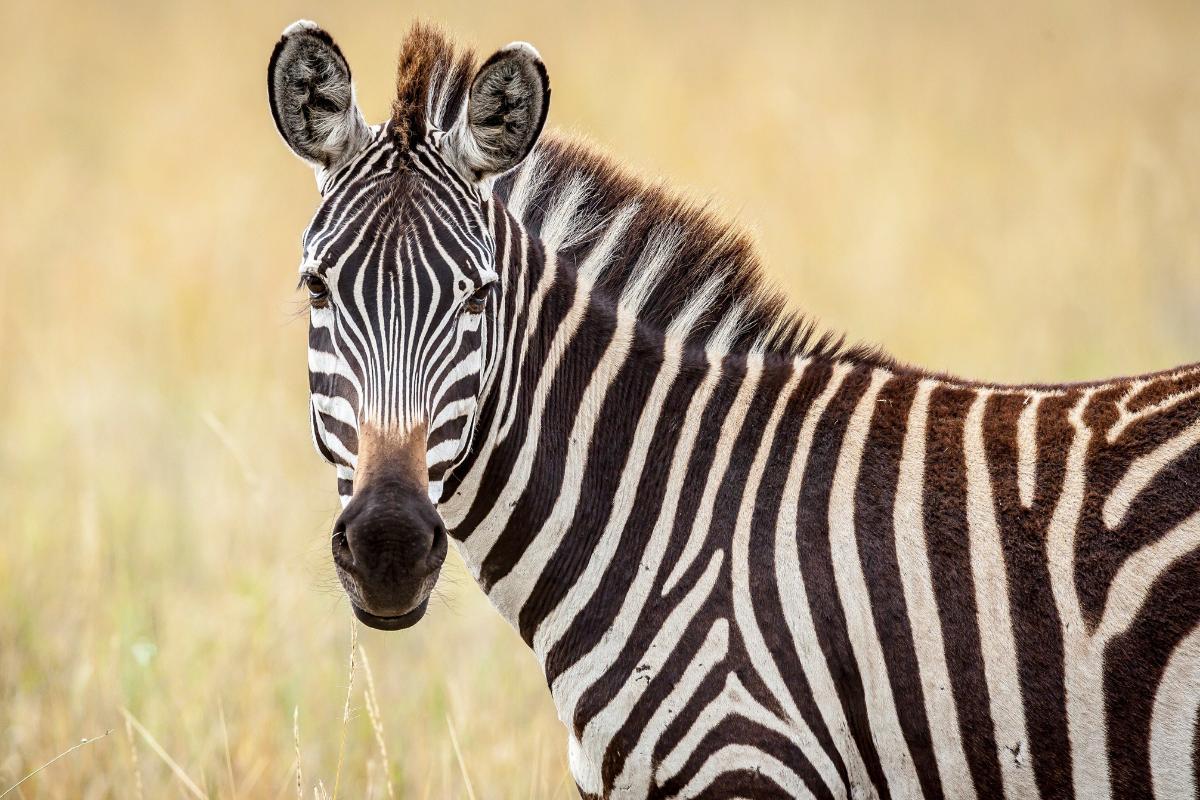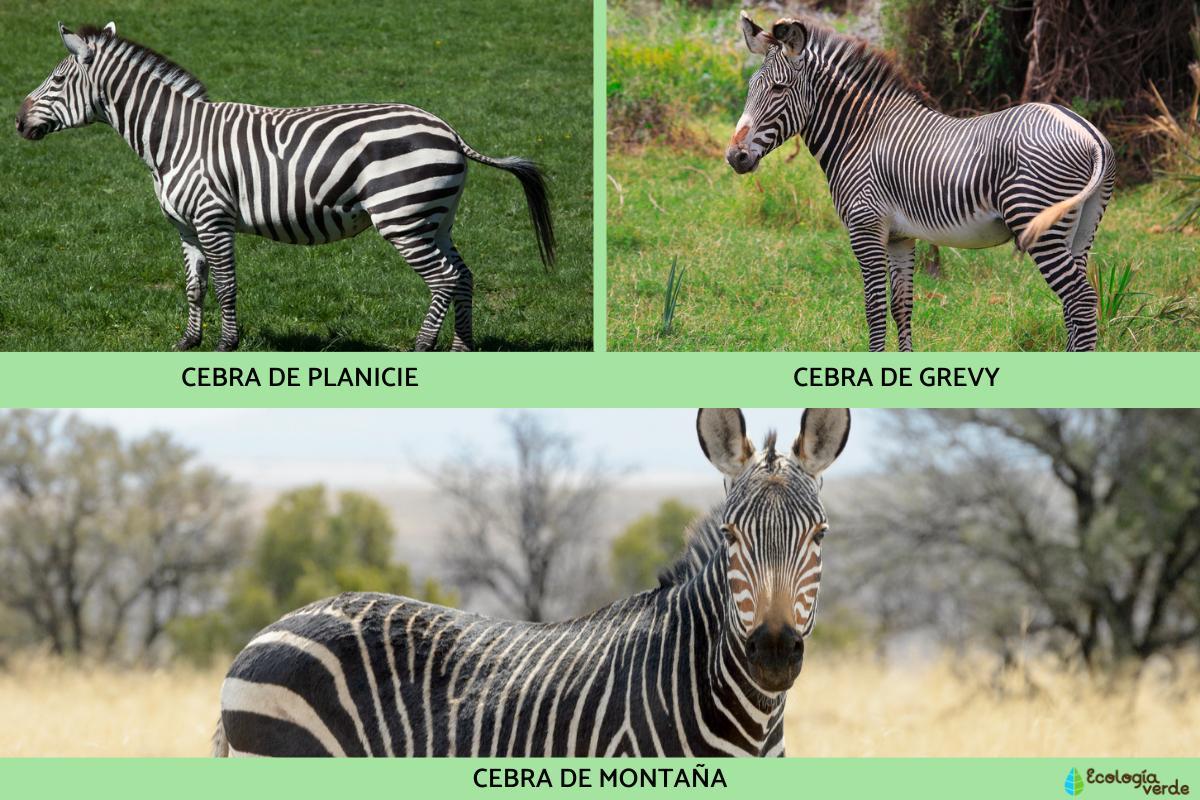What Color Are Zebras?


Zebras, iconic inhabitants of the African savanna, are immediately distinguishable by their mesmerizing black and white stripes. Beyond their aesthetic charm, zebra stripes play pivotal roles in their survival, contributing to camouflage, social communication, and protection against parasites. While the black and white stripes are one of the most conspicuous feature of zebras, the intriguing question of their actual base color remains at the center of an ongoing debate.
The following article by thedailyECO explores the true color of zebras, the evolutionary significance of their stripes, and impact on their survival.
Do zebras have striped skin or fur?
Zebras have striped fur, not striped skin. The stripes on a zebra's body are a result of pigmentation in their fur, specifically in the form of alternating black and white stripes. Underneath the fur, their skin is a single color, usually black.
The zebra's distinctive fur patterning is the result of specialized pigment cells called melanocytes. Unlike human hair, zebra fur consists of individual hair follicles, each containing melanin-producing melanocytes. The concentration and distribution of these melanocytes determine the color of each stripe.
When melanocytes produce high levels of eumelanin, the dark pigment that gives skin its color, the fur appears black. When melanocytes produce lower levels or no melanin, the fur appears white. This alternating distribution of melanocytes creates the zebra's distinctive black and white stripes.

What color is the fur of zebras?
The base color of zebra fur is a combination of black stripes on a background of white or tan. The exact shade of these colors can vary among species, with Grévy's zebras exhibiting broader, black stripes on a reddish-brown background, while plains zebras feature narrower stripes on a grayish-brown background.
The specific arrangement and width of the stripes can also vary significantly among individuals within a species. This unique pattern serves as a form of identification, allowing zebras to recognize each other within their herds, particularly in large groups where visual cues are crucial for communication and coordination.
Do all zebras have the same number of stripes?
Zebras are not a monolithic group; their stripe patterns can vary significantly, both within species and across different species. Each zebra possesses a unique stripe pattern, just like a human fingerprint, making them easily identifiable among their kind.
This intricate diversity is further enhanced by the distinct stripe configurations of different zebra species. Plains Zebras (Equus quagga) typically have the most stripes, with an average of 80-90. Grévy's Zebras (Equus grevyi) have fewer stripes, averaging 50-70, while Mountain Zebras (Equus zebra) have the fewest, typically 40-60 stripes. It's crucial to remember that these are just averages, and the actual number of stripes can vary significantly among individuals within each species. Some zebras may have more or fewer stripes than the average, and the number can also change with age and sex.

Why do zebras have stripes on their body?
The stripes on zebras are not merely decorative; they serve a multitude of purposes, each variation playing a crucial role in their survival and adaptability. The unique patterns of each individual zebra allow members of a herd to recognize each other, particularly in large groups where visual cues are essential for communication and coordination. This recognition is crucial for maintaining herd cohesion, facilitating efficient movement, and coordinating escape strategies during predator encounters.
Beyond their role in social interactions, zebra stripes also play a significant role in camouflage and protection against predators. The intricate pattern of black and white stripes can confuse predators, disrupting their visual tracking of individual zebras, particularly when they are grazing in tall grasses or against the dappled light of the savanna. This disruption makes it challenging for predators to distinguish zebras from their surroundings, reducing their chances of being detected and targeted.
Additionally, some studies suggest that zebra stripes may deter biting flies. The stripes create an optical illusion that disorients the flies, making it difficult for them to land on and bite specific zebras. This, in turn, reduces the risk of zebras contracting diseases transmitted by flies, such as African horse sickness.
Why do zebras have stripes and horses don't?
While both zebras and horses belong to the equid family, the reasons for the presence of stripes in zebras can be attributed to their specific ecological and evolutionary contexts. Horses have a more solid-colored coat, which may be attributed to their historical and ecological contexts. Horses have been domesticated for various purposes, and their coat colors have been selectively bred for different traits, such as speed or strength, rather than for camouflage or social signaling in the wild.
You might be interested in this other article, where we discuss what is parallel evolution in biology.
Are zebras white with black stripes or black with white stripes?
The age-old question of whether zebras are white with black stripes or black with white stripes has been a subject of curiosity. The consensus among biologists and scientists is that zebras are black with white stripes.
The reasoning behind this conclusion lies in the development of the zebra's coat during embryonic growth. The initial coat color is determined by the distribution of pigments in the skin. In the case of zebras, they are initially all black, and the white stripes develop later in the embryonic stage.
This is supported by observations such as the fact that zebras' hooves, noses, and the skin underneath their fur are all black. Additionally, if you were to shave a zebra's fur, you would find that the skin beneath is uniformly black.
So, while the black and white stripes are undoubtedly the most visually striking feature of zebras, the scientific consensus is that their base color is black, and the white stripes are a secondary development.
If you want to read similar articles to What Color Are Zebras?, we recommend you visit our Facts about animals category.
- Carmichael, L. E. (2018). Zebras: A Foraging Journey. United Kingdom: Weigl Publishers Incorporated.







